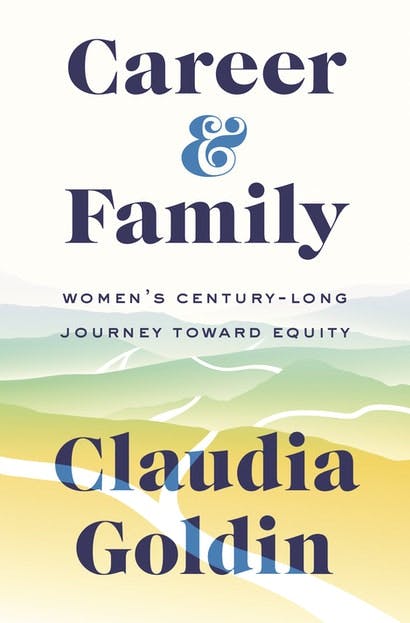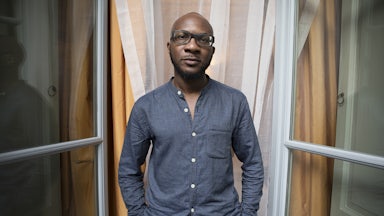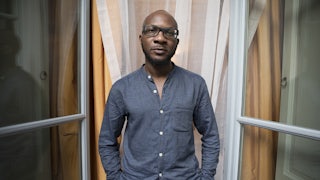I recently got engaged, which means I am, of late, very preoccupied by the question of how marriage will change my life. Though I fantasize about my future health insurance, I prefer imagining the romantic bits. Rarely do I pause to wonder how getting married will affect my professional life, but, according to the feminist economist Claudia Goldin, I should. In her blistering new book, Career & Family: Women’s Century-Long Journey Toward Equity, Goldin analyzes a staggering quantity of data about female college graduates in the United States, seeking to understand the pay gap—which, she points out, begins widening in straight couples not long after the honeymoon ends.

Goldin has devoted much of her 50-year career to studying the gender-earning gap, which she considers fully intertwined with couple inequity. Unsurprisingly, the single greatest predictor of the latter is the presence of children. Having a career often requires vast amounts of time; so does having kids. This point is so self-evident that it would hardly seem worth making, on my part or Goldin’s, were it not for the fact that American employers and policymakers seem not to have caught on. According to Goldin, the single greatest obstacle to gender equality in the U.S. is the “time bind” created by what she calls “greedy work”: jobs that demand huge quantities of their employees’ time, energy, and humanity and that do not let employees set their own hours or say no to extra work. In high- and low-earning fields alike, stable schedules and 40-hour workweeks are, too often, distant dreams. As a result, couples with children often must divide and conquer: One partner is “on call” at work, the other at home. The partner who chooses work loses valuable child-rearing time; the partner who chooses home faces pay cuts and professional setbacks; the relationship ceases to be egalitarian. Everybody loses, in short, but few couples have a better option. “In a world of greedy jobs,” Goldin writes, “couple equity is [too] expensive” for many to achieve.
While couples experience divide-and-conquer pressure regardless of gender or sexuality, Goldin focuses on straight partnerships, since, in heterosexual households, women are significantly more likely to prioritize home than work—and, indeed, are likely to plan to do so, which may explain the fact that gender pay gaps emerge in heterosexual marriages before any children are born. Goldin also limits her data to women with bachelor’s degrees, on the theory that college graduates face fewer barriers to professional success than other women; essentially, she restricts her pool to women who already have some advantage, assuming that any problem she identifies in this population will be magnified for women who have a steeper hill to climb. Career & Family is, therefore, somewhat limited in its scope, but it is true, broadly speaking, that Goldin’s observations have some application to people who fall outside her data sets. After all, her central argument is that the U.S. must “change the way work is structured,” which would affect—indeed, would benefit—everyone.
Goldin devotes nearly half of Career & Family to tracing women’s wholesale entry to the workplace, “a staggering historical shift” to which American society has yet fully to adapt. She begins with the college-graduating class of 1900; only a “small slice” of these women, she writes, were able to have careers and children. During the Great Depression, marriage-bar laws made it even more difficult for women to achieve both—with the exception, she notes, of teachers in the segregated South, where schools, especially Black schools, were so understaffed that it would have been functionally impossible to push married teachers out of their roles.
After World War II, marriage-bar laws declined, but “Americans became marriage- and family-crazed,” a mania that temporarily turned many young graduates into housewives. Goldin’s research demonstrates, however, that—counter to Betty Friedan’s famous portrait of miserable wives trapped in the kitchen with nowhere to go—these women often “planned their escape” from domesticity; they had families followed by careers, rather than combining the two. (Both my grandmothers are models of this category: Seven Sisters graduates who returned to school—social work in one case, culinary in the other—once their children were out of kindergarten, then launched fulfilling professional lives.) Not until the advent of the pill were women able to reverse this order, pursuing professional stability before starting families. These are the women, Goldin writes, “for whom one would expect the highest degree of success”—and yet they smack up against the time bind, which she ruefully refers to as “the obstruction that had always been there.”
For this reason, Goldin argues for systemic workplace reforms rather than the hearts-and-minds type of change so often advocated by girlbosses, self-help writers, and corporate feminists. Goldin, refreshingly, rejects any Lean In–type advice as “quick-fix notions” utterly unable to address the fact that our “work and care systems are relics of a past when only men had careers and families.” Greedy work, to be blunt, assumes that the worker has a wife at home. It therefore forces one-half of many couples to, if not stay home full-time, then prioritize the domestic front, choosing less well-paid jobs that offer greater structure and flexibility so their partners can work whatever hours their bosses demand.
Goldin never denies that patriarchal—or, in her acid phrasing, “primeval”—norms mean that women are more likely than men to be on call at home. She often identifies especially pernicious manifestations of these ideas, such as the belief, prevalent until roughly the 1960s, that mothers of young children “should stay at home and that their children would ‘suffer’ if they worked.” Her research shows, however, that the best corrective to such damaging notions is simply for more people to have the option of defying them. Changing realities lead to changed attitudes. Once daycare centers became widely available, for example, the idea that young children suffer if their mothers work began to recede more rapidly. Goldin calls this a “classic chicken-egg problem.” It is easy to assume that other outdated gender norms might, in fact, be similarly chicken-egg. If greedy work did not so often force couples to pick between “a marriage of equals and a marriage with more money,” the damaging notion that men ought to be primary breadwinners might, like the daycare stigma, fade away.
At the end of Career & Family, Goldin offers a handful of examples of professions in which realities have already changed. Chief among them is pharmacy, a lucrative field in which women and men have achieved parity—which, surprisingly, began when pharmacies went corporate. Before the 1950s, pharmacies tended to be independent businesses owned by individual male pharmacists. As chains like CVS and Walgreen’s took over, though, pharmacists largely ceased to be self-employed; they also gained access to advanced knowledge- and record-sharing systems. These changes mean that pharmacists can easily substitute for each other, picking up shifts or simply taking over at the end of a regular eight-hour day. Goldin calls this phenomenon “substitution among workers” and sees it as “key” to creating ungreedy workplaces, in which flexibility and structured work patterns are not penalized. In some professions, this level of substitution is impossible. Still, Goldin argues that every workplace can, like pharmacies across the nation, create systems that “operate … effectively without asking workers to run faster and longer.”
Of course, not everyone wants to run at all. A flaw built into Career & Family is that Goldin never considers, and rarely acknowledges, people who do not want careers; who, if they could afford it, would gladly not work, or not work for pay. Nor does she address the question of creative vocations, which tend to pay so poorly and irregularly that they force their practitioners into day jobs. Goldin never entertains the idea of systemic change that would render this untrue—by which I mean that, except when discussing childcare subsidies, she never calls on the government for financial or regulatory help. She asks offices, corporations, and individual professions to give up their greed, rather than asking the Department of Labor to force them to be less greedy. She never considers reducing the time bind by paying for nonworkplace labor, rather than sending everybody to work eight hours a day. I am referring here to the great unrealized feminist dream of wages for housework, which would restructure the nature of work far more radically than Goldin dares—or wants—to describe.
By many standards, Career & Family is a radical book. It is also brilliantly researched and argued. Still, I found myself wishing, as I read, to mash it up with the Italian socialist writer Silvia Federici’s ideas about housework and feminism, which invoke a world equally hospitable to those who want careers and those who do not. In her 1984 essay “Putting Feminism Back on Its Feet,” collected in the recent anthology Revolution at Point Zero, Federici declares, “The women’s movement must realize that work is not liberation. Work in a capitalist system is exploitation.… Even the ‘career’ is an illusion as far as self-fulfillment is concerned.”
Goldin, I imagine, would disagree vehemently: Career & Family relies on the premise that careers can be tremendously fulfilling. Still, her egalitarian vision would thrive in the world Federici imagines, in which governments pay for housework and provide free, reliable, and robust social services, which would lower the cost of living tremendously. These shifts would produce couple equity without requiring anyone to work in ways they dislike. Who would submit to a greedy job if they could afford not to?






